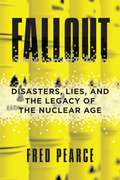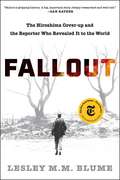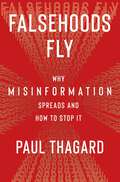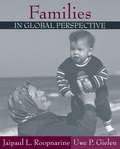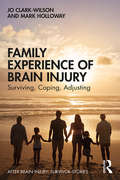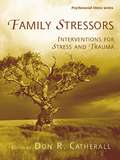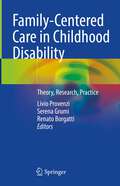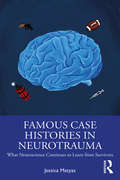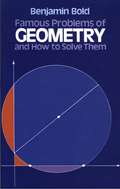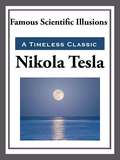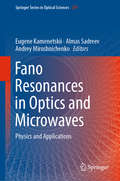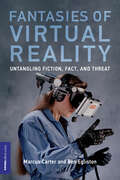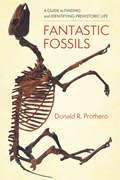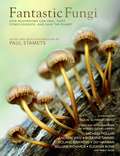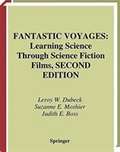- Table View
- List View
Fallout: Disasters, Lies, and the Legacy of the Nuclear Age
by Fred PearceAn investigation into our complicated 7-decade-long relationship with nuclear technology, from the bomb to nuclear accidents to nuclear waste.From Hiroshima to Chernobyl, Fukushima to the growing legacy of lethal radioactive waste, humanity's struggle to conquer atomic energy is rife with secrecy, deceit, human error, blatant disregard for life, short-sighted politics, and fear. Fallout is an eye-opening odyssey through the first eight decades of this struggle and the radioactive landscapes it has left behind. We are, he finds, forever torn between technological hubris and all-too-human terror about what we have created.At first, Pearce reminds us, America loved the bomb. Las Vegas, only seventy miles from the Nevada site of some hundred atmospheric tests, crowned four Miss Atomic Bombs in 1950s. Later, communities downwind of these tests suffered high cancer rates. The fate of a group of Japanese fishermen, who suffered high radiation doses from the first hydrogen bomb test in Bikini atoll, was worse. The United States Atomic Energy Commission accused them of being Red spies and ignored requests from the doctors desperately trying to treat them.Pearce moves on to explore the closed cities of the Soviet Union, where plutonium was refined and nuclear bombs tested throughout the '50s and '60s, and where the full extent of environmental and human damage is only now coming to light. Exploring the radioactive badlands created by nuclear accidents--not only the well-known examples of Chernobyl and Fukushima, but also the little known area around Satlykovo in the Russian Ural Mountains and the Windscale fire in the UK--Pearce describes the compulsive secrecy, deviousness, and lack of accountability that have persisted even as the technology has morphed from military to civilian uses. Finally, Pearce turns to the toxic legacies of nuclear technology: the emerging dilemmas over handling its waste and decommissioning of the great radioactive structures of the nuclear age, and the fearful doublethink over the world's growing stockpiles of plutonium, the most lethal and ubiquitous product of nuclear technologies. For any reader who craves a clear-headed examination of the tangled relationship between a powerful technology and human politics, foibles, fears, and arrogance, Fallout is the definitive look at humanity's nuclear adventure.
Fallout: The Hiroshima Cover-up and the Reporter Who Revealed It to the World
by Lesley M.M. BlumeNew York Times bestselling author Lesley M.M. Blume reveals how one courageous American reporter uncovered one of the deadliest cover-ups of the 20th century—the true effects of the atom bomb—potentially saving millions of lives. Just days after the United States decimated Hiroshima and Nagasaki with nuclear bombs, the Japanese surrendered unconditionally. But even before the surrender, the US government and military had begun a secret propaganda and information suppression campaign to hide the devastating nature of these experimental weapons. The cover-up intensified as Occupation forces closed the atomic cities to Allied reporters, preventing leaks about the horrific long-term effects of radiation which would kill thousands during the months after the blast. For nearly a year the cover-up worked—until New Yorker journalist John Hersey got into Hiroshima and managed to report the truth to the world. As Hersey and his editors prepared his article for publication, they kept the story secret—even from most of their New Yorker colleagues. When the magazine published &“Hiroshima&” in August 1946, it became an instant global sensation, and inspired pervasive horror about the hellish new threat that America had unleashed. Since 1945, no nuclear weapons have ever been deployed in war partly because Hersey alerted the world to their true, devastating impact. This knowledge has remained among the greatest deterrents to using them since the end of World War II. Released on the 75th anniversary of the Hiroshima bombing, Fallout is an engrossing detective story, as well as an important piece of hidden history that shows how one heroic scoop saved—and can still save—the world.
Fallzahlberechnung in der medizinischen Forschung: Eine Einführung für Mediziner und Biostatistiker (essentials)
by Meinhard KieserMeinhard Kieser vermittelt anhand realer Beispiele die grundlegenden Prinzipien der Fallzahlberechnung und demonstriert deren Anwendung. F#65533;r die h#65533;ufigsten Anwendungssituationen werden die entsprechenden Fallzahlberechnungsformeln hergeleitet. Einsteiger haben somit die M#65533;glichkeit, die Grundlagen der Fallzahlplanung zu erlernen und einzu#65533;ben. Es werden au#65533;erdem die statistischen Hintergr#65533;nde der Formeln und allgemeinere Zusammenh#65533;nge erl#65533;utert und Hinweise gegeben, was bei jeder Fallzahlberechnung beachtet werden sollte. Damit geht das essential deutlich #65533;ber eine reine Formelsammlung hinaus und ist eine wertvolle Erg#65533;nzung f#65533;r Personen, die bereits in der medizinischen Forschung t#65533;tig sind und Erfahrung bei der Fallzahlberechnung gesammelt haben.
Falsehoods Fly: Why Misinformation Spreads and How to Stop It
by Paul ThagardMisinformation is one of the twenty-first century’s greatest challenges, a peril to democracy, peace, science, and public health. Yet we lack a clear understanding of what makes misinformation so potent and why it can spread so rapidly. In Falsehoods Fly, a leading cognitive scientist and philosopher offers a new framework for recognizing and countering misleading claims by exploring the ways that information works—and breaks down.Paul Thagard examines the dangers of misinformation on COVID-19, climate change, conspiracy theories, inequality, and the Russian invasion of Ukraine. He argues that effective responses to these problems require understanding how information is generated and spread. Bringing together empirical findings about the psychological and social mechanisms that drive cognitive errors with philosophical accounts of critical thinking, Thagard develops an innovative theory of how we gain information. Grasping how the generation and transmission of knowledge can fail helps us find ways to repair it and provides tools for converting misinformation into facts. Offering a deep and rich account of the nature and workings of information, Falsehoods Fly provides practical, concrete strategies to stop the creation and spread of misinformation.
Familial Cardiomyopathies: Methods and Protocols (Methods in Molecular Biology #2735)
by Michael Regnier Matthew ChildersThis volume covers the latest advances in technologies that look at familial cardiomyopathies in greater detail, and provides new computational and experimental models that model, study, and detect disease at earlier stages. Together, this allows interdisciplinary research experiments to provide new insights for the development of novel interventions that slow, stop, or even reverse the disease process. Written in the highly successful Methods in Molecular Biology series format, chapters include introductions to their respective topics, lists of the necessary materials and reagents, step-by-step, readily reproducible laboratory protocols, and tips on troubleshooting and avoiding known pitfalls.Cutting-edge and practical, Familial Cardiomyopathies: Methods and Protocols aims to inspire further development of techniques used to study myocardial disease and the development of new, sarcomere-targeted therapeutic approaches for the maintenance of heart health and the treatment of heart failure.
Familie und belastete Generationenbeziehungen
by Dieter KarrerFamiliäre Beziehungen sind doppelgesichtig: Es sind Liebes- und Machtbeziehungen, Beziehungen ohne Berechnung und doch wird aufgerechnet, persönliche Beziehungen, die einer starken Moralisierung unterliegen. Wie äußert sich der ,,Eigensinn des Familialen", wenn die Generationenbeziehungen in einer Krise unter Druck geraten: Wenn erwachsene Söhne und Töchter (wieder) bei den Eltern leben und von ihnen unterstützt werden müssen, weil sie erwerbslos sind und nicht in der Lage, auf eigenen Beinen zu stehen. Oder wenn Eltern pflegebedürftig werden und die Kinder, die ihr eigenes Leben haben, mit der Aufgabe konfrontiert sind, sich um sie zu kümmern. Wie erleben die betroffenen Eltern und Kinder die Situation, wie gehen sie damit um und welche Probleme und Konflikte sind damit verbunden. Diese Fragen stehen im Mittelpunkt des Buches, das sich auch als ein Beitrag zur Erforschung familialer Beziehungen versteht, ein Thema, das in den letzten Jahren etwas aus dem Blickfeld der Soziologie geraten ist.
Families in Global Perspective
by Jaipaul L. RoopnarineHistorians and anthropologists teach that throughout recorded history and in all present-day societies, families have formed the basic cells of the social fabric of society. No other institution, it seems, is similarly adapted to fulfill the combined economic, emotional, and sexual needs of adults while simultaneously responding to the fundamental requirements of infants, children, and adolescents for sustenance, nurturance, and guidance. At the same time, a wealth of family forms that, additionally, are rapidly changing in the face of worldwide economic and technological transformations, has evolved within societies. It is the purpose of this book to document and explain family life in all its varieties from a global and dynamic point of view.
Family Experience of Brain Injury: Surviving, Coping, Adjusting (After Brain Injury: Survivor Stories)
by Mark Holloway Jo Clark-WilsonBrain Injury not only affects its victim, but those around them. In many cases, relatives are often overlooked despite facing many obstacles accepting and adjusting to a new way of life. Family Experience of Brain Injury showcases a unique collaboration between relatives of brain injured individuals and professionals from the field of neurorehabilitation. Family members from all different viewpoints tell their story and how the brain injury of a loved one has affected them. This book provides a space for those hidden and marginalised voices, the people who are in for the long haul, often dismissed by services and left to cope in isolation. By combining expert commentary with real life experiences, this book points towards sources of support, normalises the experience and provides a context for understanding the grief and losses of family members. Not only will the hard-earnt knowledge and wisdom evident in this book help educate health and social care staff, it highlights how love, commitment, hope and perseverance, against a seemingly unbearable grief, can remain. It is essential reading for individuals and families touched by brain injury and will give multi-disciplinary professionals, such as medics, nurses, psychologists, therapists, social workers, rehabilitation practitioners and clinical supervisors, a greater understanding of their role in helping the affected family.
Family Projects for Smart Objects: Tabletop Projects That Respond to Your World
by John Keefe"The Internet of Things" is the new buzzphrase, but what is it? A toaster that texts? The fitness band on your wrist? The camera in an infant's room? Sure, it's all of those things. But it's also your phone: an ultra-sophisticated sensor and communications system in your pocket or purse--capable of tracking your steps, capturing an image, or calling an Uber. And it is actually not hard or expensive to make a sensing, communicating object yourself. Doing so can be rewarding, fun, and even useful. This book teaches the basics of building sensors and communicating objects through a series of practical, demonstrative, and fun activities.
Family Stressors: Interventions for Stress and Trauma (Psychosocial Stress Series #No. 29)
by Don CatherallFamily Stressors: Interventions for Stress and Trauma by Don Catherall
Family-Centered Care in Childhood Disability: Theory, Research, Practice
by Livio Provenzi Serena Grumi Renato BorgattiThe book presents a comprehensive and well-organized overview of the family-centered care approaches for child disability, and provides multi-professional contributions from the fields of psychiatry, psychology, and rehabilitation science. The volume is divided into three main sections, that highlights the theoretical basis, research evidence, and clinical implications of the family-centered approach to child care. Active engagement of parents in the therapeutic and rehabilitative journey of their children with disability is key to the success of early interventions and their long-term benefits. Research and clinical experiences in healthcare services around the world suggest that early supportive programs may promote children’s development at its best, with both clinical benefits and economic advantages for the healthcare system. This volume will appeal to a wide readership, from clinicians and researchers in child disability and rehabilitation, to students and professionals in the fields of psychiatry, psychology, and rehabilitation science.
Famous Case Histories in Neurotrauma: What neuroscience continues to learn from survivors
by Jessica MatyasUsing a popular case history format, this book presents a scientific history of neurotrauma. It covers a range of well-known cases, including Roald Dahl, James Brady, and Walter Freeman to give insights into a variety of neurotrauma causes and effects, from aphasia and amnesia to lobotomy and mercury toxicity. Cases are connected to clinical research methods, exploring how these methods have changed over time and illustrating how these cases are still relevant as we continue to learn about recovery from brain and spinal cord injuries. Focusing on individuals who survived their injuries beyond the acute phase, the book highlights the long-term behavioral effects of the injuries and provides estimates for prognoses and recovery pathways in acknowledgment of naturally occurring neuroregeneration. With helpful key term definitions, Matyas distinguishes fact from fiction to give an accurate account of a wide spectrum of cases and highlight what we can learn from them. Famous Case Histories in Neurotrauma is valuable reading for students in behavioral neuroscience, clinical neuropsychology and related fields.
Famous Composers – Diseases Reloaded
by Andreas OtteThe life and death, but also the creative work of famous musicians is closely linked to their personal medical histories. In "Famous Composers – Diseases Reloaded" these case histories are vividly reconstructed on the basis of authentic biographical testimonies and closely linked to the personalities of the musicians. The latest research findings on the pathophysiology of these composers will be woven into the overall picture. Was Paganini's "devilishness" caused by a hereditary disease? Did Scarlatti have strange signs of illness on his fingers? What did Bach really die of? How did "Christel" from a dubious milieu change Schumann's entire life? What aggravated Ravel's underlying illness so that he did not complete a single composition in the last five years before his death? How did Tárrega manage to play the guitar again after his stroke with hemiplegia? Did the Brazilian Villa-Lobos' worldwide reputation help him live longer thanks to the best treatment available to him? Andreas Otte, physician and musician, has incorporated the latest medical history research into the composers' pathographies. This book is an exciting and "well-tempered" reading experience not only for physicians, music lovers, musicologists and musicians, but for all readers who want to develop a basic understanding of the pathophysiology and life scores of these great masters under current conditions from today's perspective.
Famous Problems of Geometry and How to Solve Them (Dover Books on Mathematics)
by Benjamin BoldIt took two millennia to prove the impossible; that is, to prove it is not possible to solve some famous Greek problems in the Greek way (using only straight edge and compasses). In the process of trying to square the circle, trisect the angle and duplicate the cube, other mathematical discoveries were made; for these seemingly trivial diversions occupied some of history's great mathematical minds. Why did Archimedes, Euclid, Newton, Fermat, Gauss, Descartes among so many devote themselves to these conundrums? This book brings readers actively into historical and modern procedures for working the problems, and into the new mathematics that had to be invented before they could be "solved."The quest for the circle in the square, the trisected angle, duplicated cube and other straight-edge-compass constructions may be conveniently divided into three periods: from the Greeks, to seventeenth-century calculus and analytic geometry, to nineteenth-century sophistication in irrational and transcendental numbers. Mathematics teacher Benjamin Bold devotes a chapter to each problem, with additional chapters on complex numbers and analytic criteria for constructability. The author guides amateur straight-edge puzzlists into these fascinating complexities with commentary and sets of problems after each chapter. Some knowledge of calculus will enable readers to follow the problems; full solutions are given at the end of the book.Students of mathematics and geometry, anyone who would like to challenge the Greeks at their own game and simultaneously delve into the development of modern mathematics, will appreciate this book. Find out how Gauss decided to make mathematics his life work upon waking one morning with a vision of a 17-sided polygon in his head; discover the crucial significance of eπi = -1, "one of the most amazing formulas in all of mathematics." These famous problems, clearly explicated and diagrammed, will amaze and edify curious students and math connoisseurs.
Famous Scientific Illusions
by Nikola TeslaIn Famous Scientific Illusions Nikola Tesla addresses "exceptionally interesting errors in the interpretation and application of physical phenomena which have for years dominated the minds of experts and men of science." Among these are the Moons rotation, Interplanetary Communication, Signals to Mars and others.
Fancy Bear Goes Phishing: The Dark History of the Information Age, in Five Extraordinary Hacks
by Scott J. Shapiro“Unsettling, absolutely riveting, and—for better or worse—necessary reading.” —Brian Christian, author of Algorithms to Live By and The Alignment ProblemAn entertaining account of the philosophy and technology of hacking—and why we all need to understand it.It’s a signal paradox of our times that we live in an information society but do not know how it works. And without understanding how our information is stored, used, and protected, we are vulnerable to having it exploited. In Fancy Bear Goes Phishing, Scott J. Shapiro draws on his popular Yale University class about hacking to expose the secrets of the digital age. With lucidity and wit, he establishes that cybercrime has less to do with defective programming than with the faulty wiring of our psyches and society. And because hacking is a human-interest story, he tells the fascinating tales of perpetrators, including Robert Morris Jr., the graduate student who accidentally crashed the internet in the 1980s, and the Bulgarian “Dark Avenger,” who invented the first mutating computer-virus engine. We also meet a sixteen-year-old from South Boston who took control of Paris Hilton’s cell phone, the Russian intelligence officers who sought to take control of a US election, and others.In telling their stories, Shapiro exposes the hackers’ tool kits and gives fresh answers to vital questions: Why is the internet so vulnerable? What can we do in response? Combining the philosophical adventure of Gödel, Escher, Bach with dramatic true-crime narrative, the result is a lively and original account of the future of hacking, espionage, and war, and of how to live in an era of cybercrime.Includes black-and-white images
Fano Resonances in Optics and Microwaves: Physics and Applications (Springer Series in Optical Sciences #219)
by Eugene Kamenetskii Almas Sadreev Andrey MiroshnichenkoThis book discusses the development of Fano-based techniques and reveals the characteristic properties of various wave processes by studying interference phenomena. It explains that the interaction of discrete (localized) states with a continuum of propagation modes leads to Fano interference effects in transmission, and explores novel coherent effects such as bound states in the continuum accompanied by collapse of Fano resonance. Originating in atomic physics, Fano resonances have become one of the most appealing phenomena of wave scattering in optics, microwaves, and terahertz techniques. The generation of extremely strong and confined fields at a deep subwavelength scale, far beyond the diffraction limit, plays a central role in modern plasmonics, magnonics, and in photonic and metamaterial structures. Fano resonance effects take advantage of the coupling of these bound states with a continuum of radiative electromagnetic waves. With their unique physical properties and unusual combination of classical and quantum structures, Fano resonances have an application potential in a wide range of fields, from telecommunication to ultrasensitive biosensing, medical instrumentation and data storage. Including contributions by international experts and covering the essential aspects of Fano-resonance effects, including theory, modeling and design, proven and potential applications in practical devices, fabrication, characterization and measurement, this book enables readers to acquire the multifaceted understanding required for these multidisciplinary challenges.
Fantasies of Virtual Reality: Untangling Fiction, Fact, and Threat (Strong Ideas)
by Marcus Carter Ben EglistonThe fantasies that underpin common perceptions of Virtual Reality—and what we need to know about VR&’s potential risks as well as its opportunities.Virtual reality is the next new frontier for Silicon Valley. Mark Zuckerberg, who has overseen Meta&’s investment of billions into VR, pitches it as the next dominant computing paradigm. More than just a gaming technology, VR is top of mind for academics, tech reportage, and industry evangelists who all see the potential for VR to revolutionize fields such as education and health, as well as the way we work and communicate. But will VR achieve all this? In Fantasies of Virtual Reality, Marcus Carter and Ben Egliston strip bare the tech industry&’s vision of a future dominated by immersive VR experiences, challenging the utopian promises of this technology&’s potential.Carter and Egliston offer a critical account of VR in a variety of contexts, from gaming to human resources to policing and the military. They argue that while VR does hold significant potential, the overhyped expectations surrounding it, from achieving true empathetic understanding to transforming traditional education and office work, are often overstated and fraught with issues of privacy, control, and exclusion. What&’s more, there is nothing truly virtual about virtual reality: VR is deeply entrenched in the material world, driven by tangible technological, economic, and social logics.An accessible introduction to this emerging technology, Fantasies of Virtual Reality is essential reading for anyone interested in what VR can really do—and what is just plain fantasy.
Fantastic Fireworks
by Liz HuyckHave you ever wondered how fireworks work? This article gives you information about how these spectacular shows are created.
Fantastic Fossils: A Guide to Finding and Identifying Prehistoric Life
by Donald R. ProtheroNothing fills us with a sense of wonder like fossils. What looks at first like a simple rock is in fact a clue that reveals the staggering diversity of ancient environments, the winding pathways of evolution, and the majesty of a vanished earth. But as much as one might daydream of digging a hole in the backyard and finding a Tyrannosaurus, only a few places contain these buried treasures, and when a scientist comes across a remnant of prehistoric life, great care must be taken. What do budding paleontologists need to know before starting their search?In Fantastic Fossils, Donald R. Prothero offers an accessible, entertaining, and richly illustrated guide to the paleontologist’s journey. He details the best places to look for fossils, the art of how to find them, and how to classify the major types. Prothero provides expert wisdom about typical fossils that an average person can hope to collect and how to hunt fossils responsibly and ethically. He also explores the lessons that both common and rarer discoveries offer about paleontology and its history, as well as what fossils can tell us about past climates and present climate change. Captivating illustrations by the paleoartist Mary Persis Williams bring to life hundreds of important specimens. Offering valuable lessons for armchair enthusiasts and paleontology students alike, Fantastic Fossils is an essential companion for all readers who have ever dreamed of going in search of traces of a lost world.
Fantastic Fungi: Expanding Consciousness, Alternative Healing, Environmental Impact // Official Book Of Smash Hit Documentary
by Paul Stamets&“Louie Schwartzberg&’s lightly informative, delightfully kooky documentary, &“Fantastic Fungi,&” offers nothing less than a model for planetary survival.&” –Jeannette Catsoulis, The New York Times &“Gorgeous photography! Time-lapse sequences of mushrooms blossoming forth could pass for studies of exotic flowers growing on another planet.&” –Joe Morgenstern, The Wall Street JournalThe Life-Affirming, Mind-Bending Companion Book to the Smash Hit Documentary FANTASTIC FUNGI Viewed in over 100 countries and selling hundreds of thousands of tickets on the way to finishing 2019 with a rare 100% Tomato meter rating on Rotten Tomatoes, Schwartzberg&’s documentary Fantastic Fungi has brought the mycological revolution to the world stage. This is the film&’s official companion book, that expands on the documentary&’s message: that mushrooms and fungi will change your life– and save the planet. Paul Stamets, the world&’s preeminent mushroom and fungi expert is joined by leading ecologists, doctors, and explorers such as Michael Pollan, Dr. Andrew Weil, Eugenia Bone, Fantastic Fungi director Louie Schwartzberg, and many more. Together these luminaries show how fungi and mushrooms can restore the planet&’s ecosystems, repair our physical health, and renew humanity&’s symbiotic relationship with nature. Join the Movement: Learn about the groundbreaking research that shows why mushrooms stand to provide a solution to environmental challenges, a viable alternative to traditional medicine, and a chance to radically shift consciousness. Most Comprehensive Fungi book in the world: Admire the astounding, underappreciated beauty with over 400 gloriously-shot photographs of the mycelial world&’s most rare and beautiful species in their natural environment. World&’s Leading Fungi Experts: Edited by preeminent mycologist Paul Stamets, who contributes original pieces, Fungi includes original contributions by bestselling author and activist Michael Pollan, alternative medicine expert Dr. Andrew Weil, award-winning nature and food writer Eugenia Bone, Fantastic Fungi director Louie Schwartzberg, and so many more. The book&’s roster of experts make this the most comprehensive survey of the diverse benefits and extraordinary potential of these amazing organisms.
Fantastic Numbers and Where to Find Them: A Cosmic Quest from Zero to Infinity
by Antonio PadillaA fun, dazzling exploration of the strange numbers that illuminate the ultimate nature of reality.For particularly brilliant theoretical physicists like James Clerk Maxwell, Paul Dirac, or Albert Einstein, the search for mathematical truths led to strange new understandings of the ultimate nature of reality. But what are these truths? What are the mysterious numbers that explain the universe? In Fantastic Numbers and Where to Find Them, the leading theoretical physicist and YouTube star Antonio Padilla takes us on an irreverent cosmic tour of nine of the most extraordinary numbers in physics, offering a startling picture of how the universe works. These strange numbers include Graham’s number, which is so large that if you thought about it in the wrong way, your head would collapse into a singularity; TREE(3), whose finite nature can never be definitively proved, because to do so would take so much time that the universe would experience a Poincaré Recurrence—resetting to precisely the state it currently holds, down to the arrangement of individual atoms; and 10^{-120}, measuring the desperately unlikely balance of energy needed to allow the universe to exist for more than just a moment, to extend beyond the size of a single atom—in other words, the mystery of our unexpected universe.Leading us down the rabbit hole to a deeper understanding of reality, Padilla explains how these unusual numbers are the key to understanding such mind-boggling phenomena as black holes, relativity, and the problem of the cosmological constant—that the two best and most rigorously tested ways of understanding the universe contradict one another. Fantastic Numbers and Where to Find Them is a combination of popular and cutting-edge science—and a lively, entertaining, and even funny exploration of the most fundamental truths about the universe.
Fantastic Voyage: Live Long Enough to Live Forever
by Ray Kurzweil Terry GrossmanOne of the most respected scientists and futurists in America teams up with an expert on human longevity, to show how we can tap today's revolution in biotechnology and nanotechnology to virtually live forever.Startling discoveries in the areas of genomics, biotechnology, and nanotechnology are occurring every day. The rewards of this research, some of it as spectacular as what was once thought of as science fiction, are practically in our grasp. Already it is possible to analyze our individual genetic makeups and evaluate our predisposition for breast cancer or other deadly diseases on a case-by-case basis. And once we've isolated these genes, the ability to repress or enhance them through biotechnology is just around the corner. Soon, for example, it will be feasible for 10% of our red blood cells to be replaced by artificial cells, radically extending our life expectancy and enhancing our physical and even mental abilities beyond what is humanly possible today. In Fantastic Voyage, Ray Kurzweil and Terry Grossman will show us how amazingly advanced we are in our medical technology, and how incredibly far each of us can go toward living as long as we dare imagine.With today's mind-bending array of scientific knowledge, it is possible to prevent nearly 90% of the maladies that kill us, including heart disease, cancer, diabetes, kidney disease, and liver disease. Ray Kurzweil and Terry Grossman start the reader on a fantastic journey to undreamed-of vitality with a comprehensive investigation into the cutting-edge science on diet, metabolism, genetics, toxins and detoxification, the hormones involved with aging and youth, exercise, stress reduction, and more. By following their program, which includes such simple recommendations as drinking alkaline water and taking specific nutritional supplements to enhance your immune system and slow the aging process on a cellular level, anyone will be able to immediately add years of healthy, active living to his life.
Fantastic Voyages: Learning Science Through Science Fiction Films
by Leroy W. Dubeck Suzanne E. Moshier Judith E. BossBy revealing the facts behind the fiction of some of the finest films in the sci-fi genre, "Fantastic Voyages" offers a novel approach to teaching science: using scenes from science fiction films to illustrate fundamental concepts of physics, astronomy, and biology.
